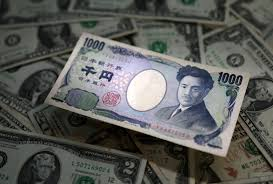The Japanese yen firmed against the dollar on Wednesday as investors scurried to safer assets after a sharp sell-off on Wall Street in the prior session sparked by concerns about the U.S. economy and tech sector valuations.
The catalyst was ostensibly some soft U.S. manufacturing data, which fanned worries about a hard landing for the world’s biggest economy, with traders already nervous ahead of the crucial monthly payrolls numbers on Friday.
U.S. equity indexes slid on Tuesday, with AI chip giant Nvidia tumbling nearly 10%. The risk-off mood spilled over to Asia and Europe on Wednesday.
“It’s a bit reminiscent of the early August sell-off where you didn’t really need a catalyst. It’s just that you’re at the highs in risky assets,” said Alex Jekov, head of G10 FX strategy at BNP Paribas.
“The dollar is softer versus low-yielding currencies because they are getting a bid from the risk-off environment. But what is different from August is that U.S. rates aren’t participating quite as much. It seems to be mainly an equities story.”
The yen strengthened as much as 0.4% to 144.89 per dollar before last trading up about 0.3% at 144.95 as of 1144 GMT, following a 1% rally overnight.
Dollar/yen hit a multi-month low of 141.68 in early August after a surprisingly weak U.S. payrolls data and an interest rate hike from the Bank of Japan triggered a massive unwind of yen-funded carry trades.
JOBS FOCUS
Risks to the U.S. soft-landing scenario – which had been gaining traction in markets – saw traders raise the chances of a 50-basis point Federal Reserve interest rate cut this month to 37% from 30% a day earlier, according to the CME Group’s FedWatch Tool.
Ahead of that, investors will keep a close eye on job openings data on Wednesday and jobless claims on Thursday.
U.S. markets were closed for the Labor Day holiday on Monday and came back on Tuesday to a weak Institute for Supply Management survey that suggested factory activity in the country would remain subdued for a while.
“That was supposed to show a gain, but actually showed a decline, and has made people wonder once more about the Fed possibly being too late to act,” said Sam Stovall, chief investment strategist at CFRA.
The Swiss franc, another safe haven, strengthened by as much as 0.3% to 0.84735 per dollar before trading nearly flat.



